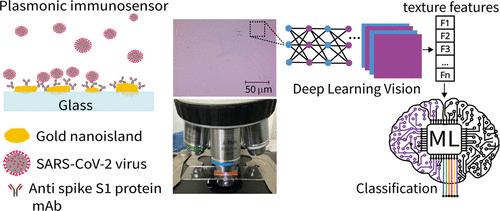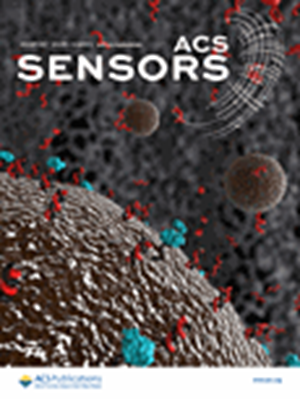Using Machine Learning and Optical Microscopy Image Analysis of Immunosensors Made on Plasmonic Substrates: Application to Detect the SARS-CoV-2 Virus
IF 8.2
1区 化学
Q1 CHEMISTRY, ANALYTICAL
引用次数: 0
Abstract
In this article, we introduce a diagnostic platform comprising an optical microscopy image analysis system coupled with machine learning. Its efficacy is demonstrated in detecting SARS-CoV-2 virus particles at concentrations as low as 1 PFU (plaque-forming unit) per milliliter by processing images from an immunosensor on a plasmonic substrate. This high performance was achieved by classifying images with the support vector machine (SVM) algorithm and the MobileNetV3_small convolutional neural network (CNN) model, which attained an accuracy of 91.6% and a specificity denoted by an F1 score of 96.9% for the negative class. Notably, this approach enabled the detection of SARS-CoV-2 concentrations 1000 times lower than the limit of detection achieved with localized surface plasmon resonance (LSPR) sensing using the same immunosensors. It is also significant that a binary classification between control and positive classes using the MobileNetV3_small model and the random forest algorithm achieved an accuracy of 96.5% for SARS-CoV-2 concentrations down to 1 PFU/mL. At such low concentrations, straightforward screening of newly infected patients may be feasible. In supporting experiments, we verified that texture was the main contributor to the distinguishability of images taken at different SARS-CoV-2 concentrations, indicating that the combination of ML and image analysis may be applied to any biosensor whose detection mechanism is based on adsorption.

求助全文
约1分钟内获得全文
求助全文
来源期刊

ACS Sensors
Chemical Engineering-Bioengineering
CiteScore
14.50
自引率
3.40%
发文量
372
期刊介绍:
ACS Sensors is a peer-reviewed research journal that focuses on the dissemination of new and original knowledge in the field of sensor science, particularly those that selectively sense chemical or biological species or processes. The journal covers a broad range of topics, including but not limited to biosensors, chemical sensors, gas sensors, intracellular sensors, single molecule sensors, cell chips, and microfluidic devices. It aims to publish articles that address conceptual advances in sensing technology applicable to various types of analytes or application papers that report on the use of existing sensing concepts in new ways or for new analytes.
 求助内容:
求助内容: 应助结果提醒方式:
应助结果提醒方式:


